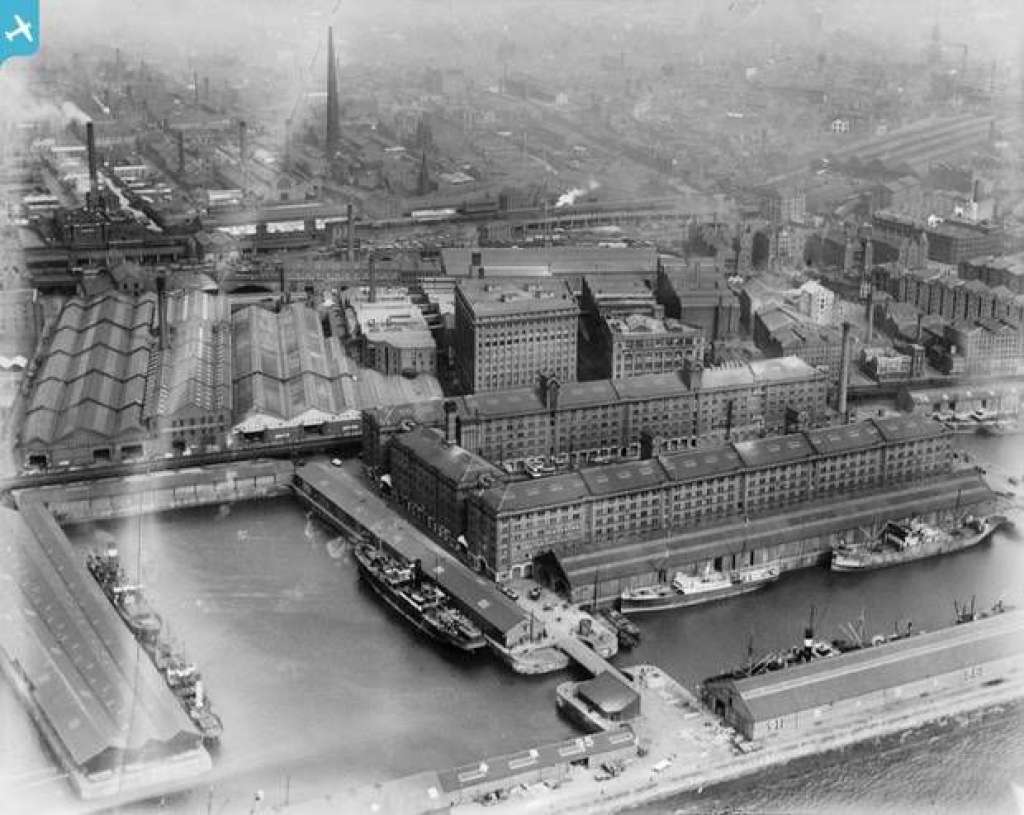PRESS RELEASE: SAVE welcomes Liverpool refusal of Waterloo Dock infill scheme
26th January 2022
SAVE Britain’s Heritage welcomes the decision by Liverpool City Councillors to refuse proposals to infill part of West Waterloo Dock in the city’s historic northern docks. The decision last week follows a near three-year campaign led by local campaign group Save Waterloo Dock, with support from SAVE.
The unanimous decision reached by the City Council’s Major Development Planning Committee last Tuesday 18th January 2022, means the proposal for 330 flats is refused, pending a decision by the Planning Inspectorate whether to allow an appeal by developer Romal Capital on grounds the plans were not determined within legal time limits.
Under the proposals almost half of the West Waterloo Dock basin, built in 1834, would have been infilled to allow for the construction of three blocks of flats of up to nine storeys. Whilst the basin is unlisted, the new buildings would have harmed the setting and protected views of the grade II listed Waterloo Warehouse from the River Mersey.
In their reasons for refusal, councillors agreed with the assessment of planning officers that the purported benefits of the scheme did not outweigh the harm to the city’s dock heritage that the proposed infill of West Waterloo Dock basin would cause.
SAVE had opposed all three iterations of the infill scheme since it first emerged in 2019, on grounds that the infilling of further historic docks was neither necessary nor justified, and if permitted, would set a dangerous precedent for the erosion, rather than regeneration of the docks.
Ben Oakley, conservation officer at SAVE Britain’s Heritage, said: “Liverpool is one of the world’s great historic cities, and its unique system of maritime docks are integral to its identity. This decision sends a clear message to those developing Liverpool’s historic docks that regeneration doesn’t mean infilling.”
A spokesperson for the Save Waterloo Dock Neighbourhood Association said: “Our three-year battle to save historic West Waterloo Dock won its biggest victory yet on 18 January when Liverpool City Council rejected this planning application to partly fill in our dock. A major reason for their decision is the adverse impact on the historic environment. This verdict clearly shows that when people join forces in defence of their community, the powers that be have to listen."
Background
In July 2021, Liverpool lost its international UNESCO World Heritage Site status - 17 years after it was first inscribed as: ‘The supreme example of a commercial port at the time of Britain's greatest global influence’. The decision – due to inadequate management of large-scale development and weak planning laws - follows years of warnings from UNESCO about the impact of new development on the docks.
In particular, the consented infilling of Bramley-Moore Dock, and the £5.5bn 'Liverpool Waters' scheme, a highly controversial outline planning permission granted in 2013 for a 60-hectare site with buildings up to 50-storeys in height. Put forward by the Peel Group, it was granted an unusually long planning permission until 2042.
SAVE has long campaigned for the retention and imaginative reuse of Liverpool historic docks, starting with our support of efforts to save the Albert Dock which the council had sought to infill in the 1980s. The dock and the historic warehouses around it now form a thriving residential, restaurant and cultural quarter, including the first Tate Museum to be built outside of London.
We have also championed the rescue and reuse of numerous other Liverpool landmarks, including the North Western Hotel on Lime Street (now a Wetherspoons pub), the churches of St Francis Xavier, St Mary of the Angels (Everton) and St Andrew’s Rodney Street, the Littlewoods building, the Granby Four Streets and the Welsh Streets, Andrew Gibson House and most recently the Abbey Cinema, Wavertree.
History
Waterloo Dock was constructed in 1834 as a general cargo dock to designs by the prolific dock engineer Jesse Hartley. Its large size and two aligned basins were designed to accommodate large sailing ships focussed on the rapidly expending transatlantic trade links between Liverpool and the new world at the time.
The dock continued to function until the late 1980s but has since been left to gently decline. The grade II listed East Waterloo Warehouse was successfully converted into apartments in 1989 and remains an important city landmark.
ENDS
Note to editors
1. For more information contact Ben Oakley, conservation officer at SAVE Britain's Heritage – ben.oakley@savebritainsheritage.org / 020 7253 3500.
2. See our previous press release on plans to infill Waterloo Dock here.
3. See our response to UNESCO’s decision to strip Liverpool’s World Heritage Site Status in July 2021 here.
4. SAVE Britain's Heritage is a strong, independent voice in conservation that fights for threatened historic buildings and sustainable reuses. We stand apart from other organisations by bringing together architects, engineers, planners and investors to offer viable alternative proposals. Where necessary, and with expert advice, we take legal action to prevent major and needless losses.




